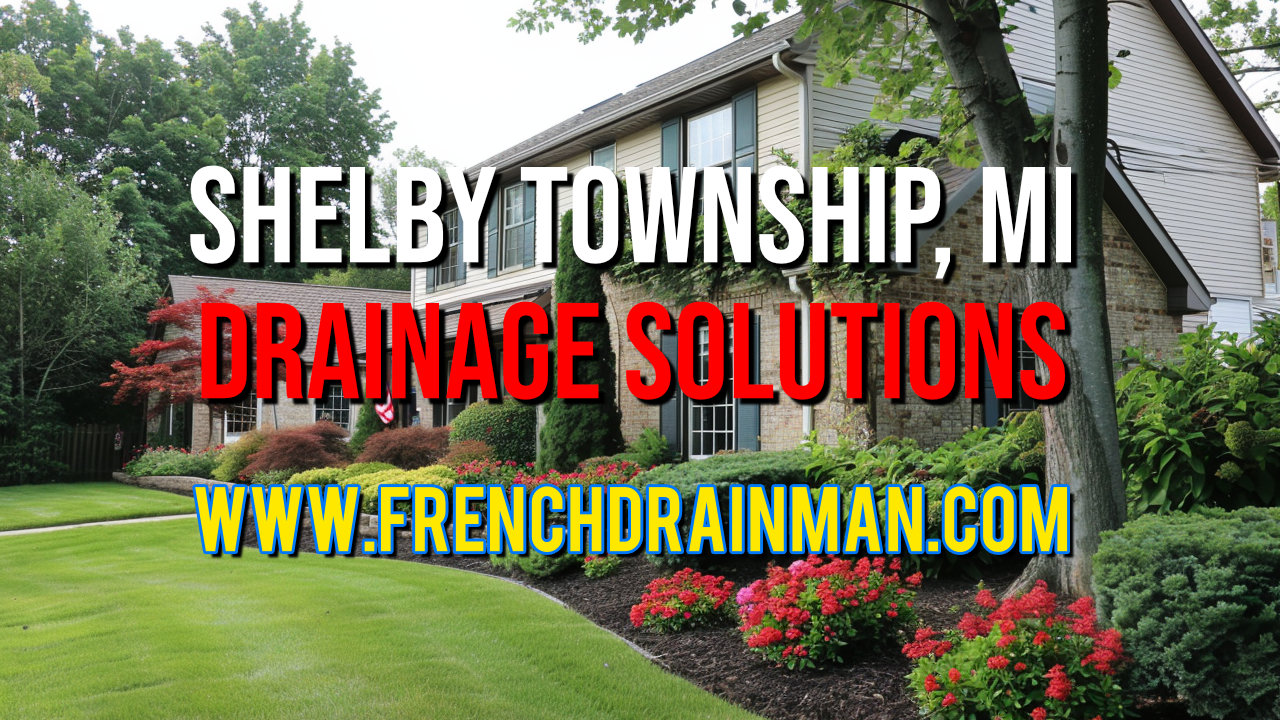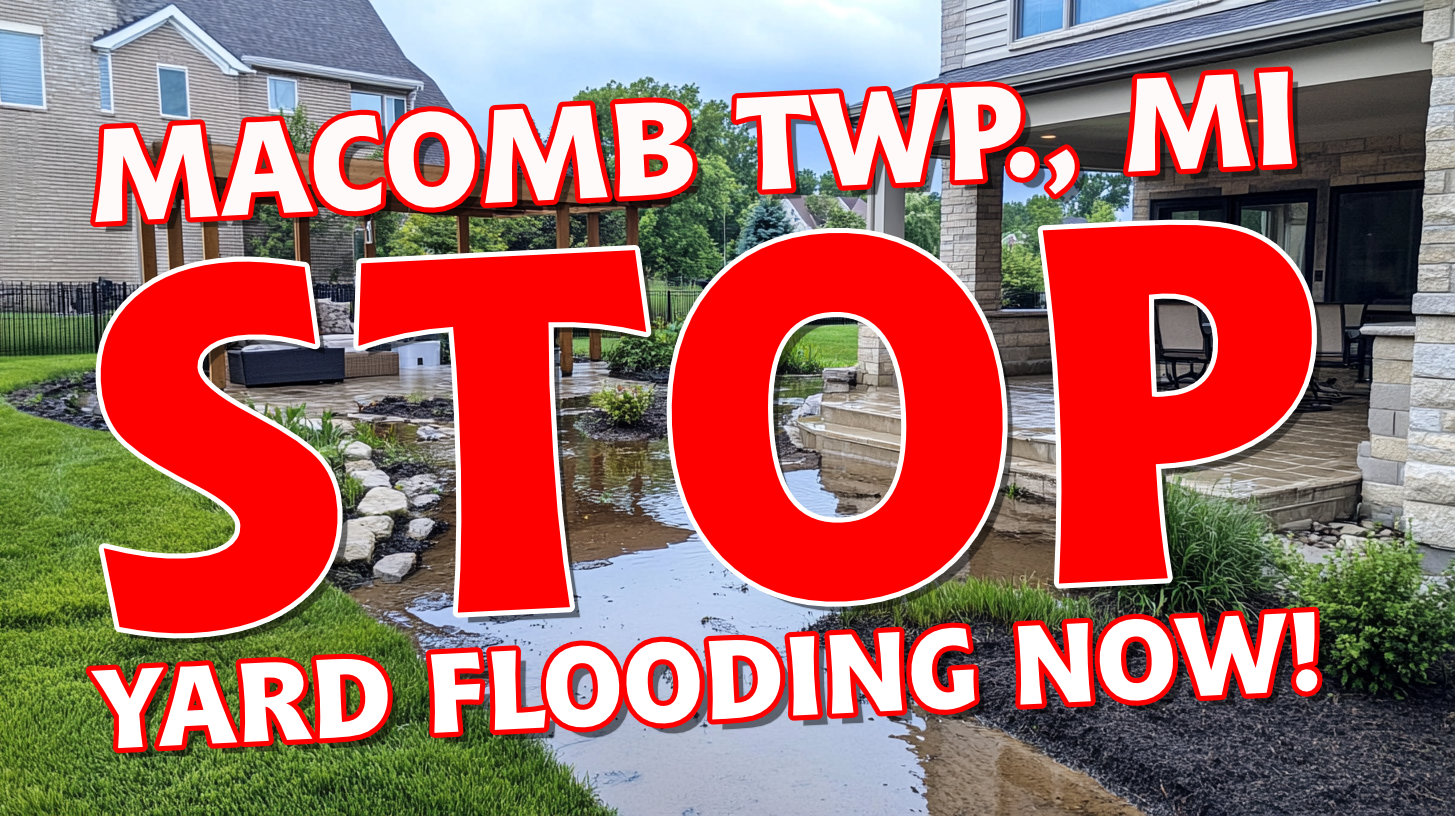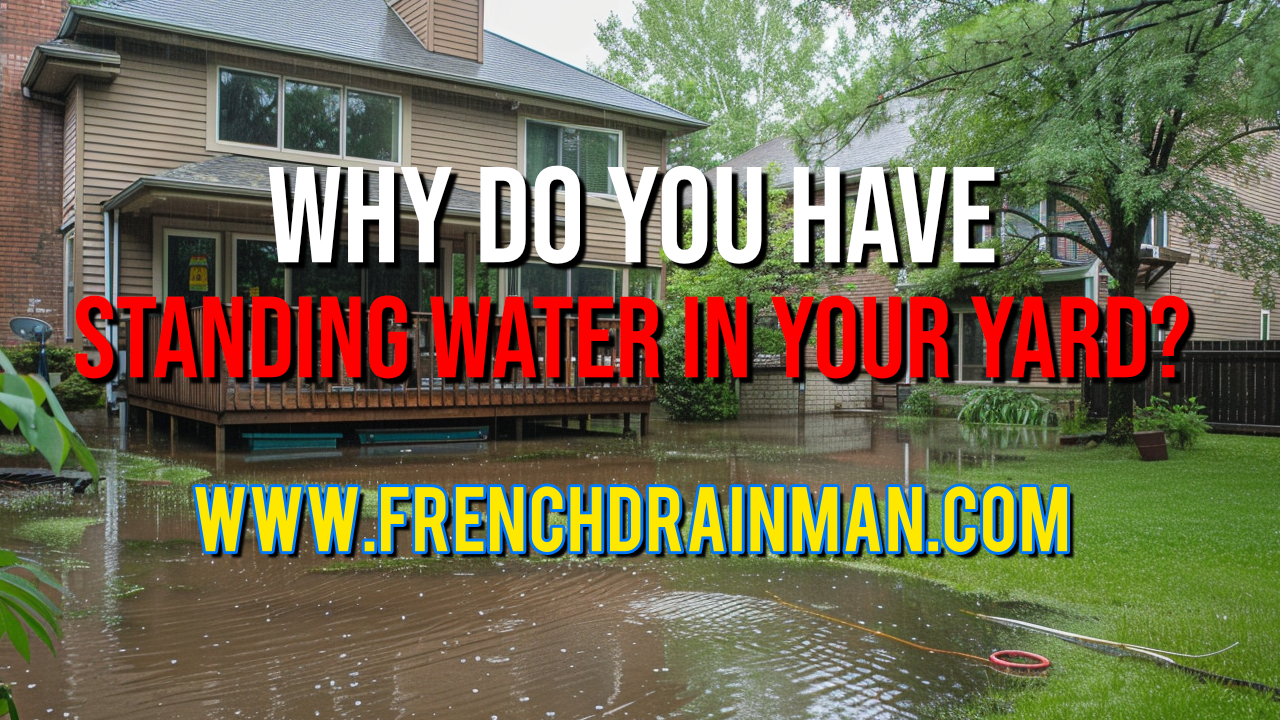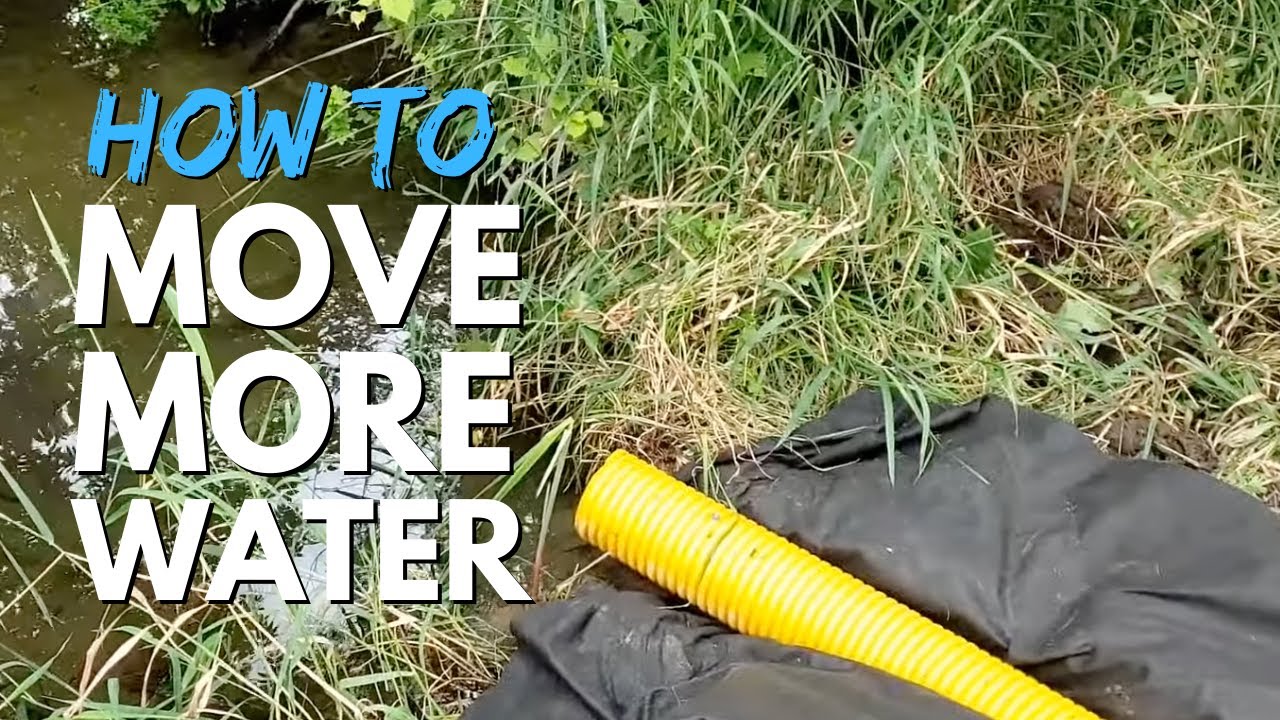Shelby Township Drainage Solutions
Welcome to our comprehensive drainage solutions guide for Shelby Township, Michigan homeowners. If puddles have formed in your yard, water is pooling near your foundation, or your lawn becomes soggy after rainstorms, don’t feel bad. Many residents in Shelby Township experience similar drainage problems that pose severe threats to the structural integrity of their homes and landscape health.
Adequate drainage is vital to protecting property values and avoiding water damage, and in this guide, we’ll explore solutions explicitly tailored to Shelby Township’s climate conditions. From French drains and sump pumps to other techniques that manage water flow around your home and keep the basement dry while keeping the yard beautiful, you’ll learn everything you need to know to manage water flow effectively and keep the basement dry and your yard beautiful.
This article provides practical, user-friendly guidance for improving the drainage on your property. Whether it be basement seepage, water-logged gardens, or simply wanting to prevent future issues from arising, finding the appropriate drainage solution could make all the difference in protecting against damage due to heavy rainfalls and giving peace of mind during stormy periods. Read further and discover some proven practices and innovative solutions that could protect against future water issues while improving outdoor living spaces and giving peace of mind during extreme rainfall events.
Challenges of Outdoor Drainage in Shelby Township
Navigating the challenges associated with outdoor drainage in Shelby Township requires understanding several key factors contributing to water management. Due to Shelby Township’s unique environmental conditions, drainage efforts may become complicated, requiring homeowners to carefully consider how they manage water on their properties.
Climate Variability
Shelby Township experiences various weather conditions throughout the year, from heavy spring rains to melting snow in winter. This variety can lead to periods of intense water accumulation without adequate drainage solutions; without access to drainage channels, this water could saturate the ground, leading to soggy lawns or flooding issues.
Soil Composition
Shelby Township’s primary challenge is its predominantly clay soil composition. Clay soils lack permeability, meaning water doesn’t seep quickly into the ground when it rains – instead accumulating as puddles or seeping into it slowly as regular ground does – creating issues for maintaining healthy landscaping and keeping foundations safe from leakage.
Topographical Issues
An area’s natural topography can have an enormous effect on drainage systems. When land is flat, or depressions form in the landscape, water pools in low spots without an effective drainage system to divert it away. Such conditions necessitate proactive interventions to divert excess liquid away from critical locations.
Urban Development
As urban areas expand, their increasing reliance on impervious surfaces such as roads, driveways, and sidewalks exacerbate drainage problems by blocking water from naturally soaking into the ground and growing runoff, which must be managed using additional drainage solutions.
Recognizing these challenges is the first step toward developing effective drainage strategies to safeguard your property. Addressing them through targeted solutions can strengthen your home’s resilience against water-related issues – guaranteeing beautiful outdoor spaces regardless of the weather.
Assessing Outdoor Drainage Needs
At the core of outdoor drainage in Shelby Township lies an evaluation of your property’s landscape. Every yard presents different challenges and opportunities when it comes to drainage. To begin, observe where water collects during a rainfall event: where does it collect, and where are areas where standing water can persist for extended periods? Mapping these problem spots can give valuable insights into any underlying issues affecting drainage in Shelby Township.
Soil Analysis
Understanding your yard’s soil type is integral to managing outdoor drainage effectively. Shelby Township’s predominance of clay soil causes poor permeability; water pools on top rather than seeping quickly into it, leading to saturation and the formation of puddles. Conduct a soil test to ascertain your type and select suitable drainage solutions tailored to your landscape.
Inspection of Existing Drainage Systems
If your property already features drainage systems like French drains, catch basins, or channel drains, they must be periodically examined. Keep an eye out for any clogs, damages, or areas in which they seem less effective—sediment build-up, root intrusion, or structural damage can reduce efficiency over time, resulting in decreased performance requiring periodic maintenance. Regular checks could prevent minor issues from becoming major flooding issues.
Consult With Professionals
Consultations with drainage experts may be an invaluable service in areas like Shelby Township that present complex conditions for outdoor drainage systems, where professional evaluation may uncover less obvious issues like topographic issues or specific drainage systems that might not be readily apparent to homeowners. They can offer more in-depth assessments that identify lesser-known matters like the effects of local topography or requirements that might not be immediately obvious to the individual homeowner.
Long-Term Monitoring and Adjustments
Effective drainage solutions should never be seen as “set it and forget it” solutions. As your landscape develops and external conditions evolve, drainage needs may shift. Implementing regular checks and balances for your drainage solutions ensures they continue functioning optimally. This may include clearing blockages, adding components, or even regrading parts of your yard to increase water flow.
Essential Components of an Effective Outdoor Drainage System
Establishing an effective outdoor drainage system in Shelby Township involves harmonizing key elements to manage and redirect water away from your property. Being familiar with these components will enable you to build an efficient system that minimizes damage while protecting the health of your landscape.
Gutters and Downspouts
Gutters are essential defense mechanisms against water damage to your home. Rainwater runs off your roof into gutters, which collect it before channeling it through downspouts to drain away from the house’s foundation. Ensure they’re regularly cleared to avoid pooling around the base; consider installing gutter guards to reduce maintenance requirements.
Grading and Landscaping
Proper grading is critical for efficient drainage around your home. The land around it must slope away from its foundation at least five percent over ten feet. This natural slope can be enhanced through landscaping techniques like strategically placed berms and swales that help direct water flow, providing runoff management and aesthetic value to your yard.
French Drains
French drains offer an effective solution for managing large amounts of subsurface water on properties that need it for drainage issues or need to manage large volumes. They involve digging a trench and installing perforated pipe wrapped with filter fabric that collects excess water before channeling it toward an alternate area for disposal, effectively stopping soil saturation around your home.
Catch Basins and Channel Drains
Catch basins should be strategically installed at low points on your property where water tends to collect. They capture and divert surface water into your storm sewer system or other runoff areas for disposal. At the same time, channel drains divert it away from driveways, patios, and other hard surfaces and prevent accumulation in these areas.
Dry Wells
In areas that cannot access municipal storm drains or where on-site runoff management is desired, dry wells effectively control large runoff volumes efficiently. These underground structures temporarily store excess water before gradually discharging it into the surrounding soil—an efficient way of handling runoff in a controlled fashion.
Sump Pumps
Sump pumps can be essential in low-lying areas or where other drainage methods are inadequate. Installed at the lowest part of your basement or crawl space, sump pumps collect any accumulated water before pumping it outside, thus protecting your foundation from flooding.
Collectively, these components form an effective outdoor drainage system in Shelby Township that can address various water management needs. You can protect your property from costly water damage by including such solutions in your landscaping and maintenance practices.
Effective Outdoor Drainage Solutions for Shelby Township
Shelby Township homeowners understand the importance of outdoor drainage solutions to avoid water damage and preserve property integrity. Here are a few effective drainage strategies to address local challenges like heavy clay soil conditions or Michigan weather fluctuations.
French Drains
French drain systems can be an ideal way to improve soil permeability in areas with poor granularity, such as Shelby Township’s clay-rich grounds. By placing perforated pipes into gravel-filled trenches covered with geotextile fabric to prevent clogging, French drains redirect subsurface water away from homes while relieving saturated soil conditions and decreasing hydrostatic pressure against foundation walls.
Channel Drains
Channel drains are highly effective solutions in areas prone to surface water buildup, such as driveways, patios, and other concrete or paved areas. They create an underground channel that safely captures and diverts surface water away from properties—an indispensable solution in Shelby Township, where sudden downpours may quickly result in standing water and flooding issues.
Dry Wells
A dry well is an effective solution for managing downspout runoff in areas where connecting to municipal storm drains is impractical or impractical. By collecting rainwater in an easily accessible place and slowly percolating through to the soil, dry wells can ease drainage system strain while also helping prevent pooling around the home and its foundation.
Rain Gardens
Integrating rain gardens into your landscaping is an attractive, sustainable, and eco-friendly way to increase drainage. Strategically placed where runoff accumulates, rain gardens use water-tolerant plants and soils to absorb and filter runoff from roofs, driveways, and other impervious surfaces – managing it efficiently and supporting local biodiversity.
Swales
Swales are shallow ditches that collect runoff and direct it away from your home, filtering out pollutants while increasing groundwater absorption. With their seamless integration into landscape designs and offering natural solutions to water management challenges, swales provide a practical yet natural way of controlling runoff.
Retaining Walls
Properties with sloped terrain may benefit from installing retaining walls to mitigate soil erosion and manage runoff. When built with proper drainage solutions, such as weep holes or integrated drain pipes, these structures help stabilize slopes by stopping the downslope movement of water-soaked soil.
Sump Pump Systems
Homeowners living in Shelby Township with basements and properties located in low-lying areas need reliable sump pump systems in place to effectively drain away collected water in a sump pit – to prevent it from entering and damaging the basement or crawlspace during spring thaw in Shelby Township. These pumps pump out collected water in sump pits, keeping basements or crawl spaces free from flooding when water accumulates and helping prevent flooding during the spring thaw.
Implementing drainage solutions on any property in Shelby Township can drastically enhance its drainage capability. By choosing appropriate strategies based on your land characteristics and environmental conditions, you can ensure effective water management that protects both your home and enhances outdoor living spaces.
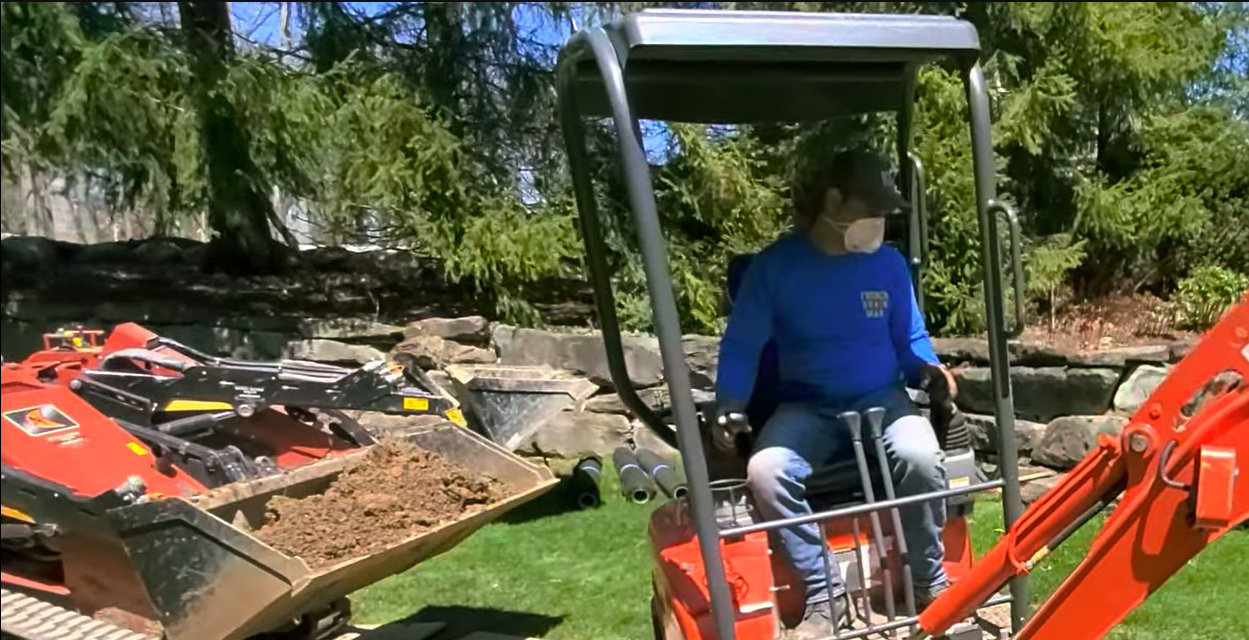
Step-by-Step Guide to Installing French Drains
Given its complex clay soil conditions, installing a French drain can be a highly effective way of controlling Shelby Township’s sub-surface water. Here is a step-by-step guide on installing one using methods employed by French Drain Man for a lasting and effective drainage system:
Before beginning excavation, carefully plan the path for your French drain. Aim for the shortest distance between where water collects and where it will be discharged. Ensure your trench has a consistent slope that allows water to move freely along its course. Use stakes and string to mark its path.
Dig the Trench
Utilizing either a trencher or shovel, dig a 12-to-18-inch wide trench that measures at least 18 inches deep using the string guideline as your reference point. Adjustments may need to be made depending on your grade and specific water issues on your property; ensure the trench has an even slope toward its discharge point to enable water flow.
Place Geo Textile Filter Fabric
Unroll geotextile filter fabric along the length of the trench. Ensure its width extends beyond both sides to prevent soil from clogging pipes while permitting water passage through. This fabric will act as an effective barrier and prevent pipes from clogging with debris while allowing passage for drainage.
Install the Perforated Pipe
Place a perforated corrugated drainage pipe on top of the filter fabric at the bottom of your trench. Ensure the holes in this drainage pipe face downward so they won’t become clogged with sediment over time. This also helps collect groundwater efficiently.
Protect the Pipe with Gravel
To prevent moisture from damaging the pipeline, cover it with gravel. This will also protect it from erosion and dust storms.
Fill the trench with washed round rock or gravel, completely covering the pipe. Ideally, this layer should be thick enough to allow water to filter into and enter the pipe while providing sufficient weight to support its stability; typically, this gravel should cover at least several inches from its surface.
Encapsulate the System:
Once the gravel has been placed in its intended spot, fold over any excess filter fabric to completely encapsulate the system, with filter fabric pins securing its closure. This creates a French drain system that protects itself against soil or roots that may penetrate it, ensuring long-term efficacy and sustainability.
Restore Surface
Restore its surface by sodding, seeding, or mulching as per your landscaping preferences. This final step allows the French drain to integrate seamlessly into your yard while initiating immediate water management.
Examine Your System
After installation, it’s advisable to test the French drain by running water from a hose near its source to ensure it flows to its discharge point effectively and verify that your new drainage system works as designed. This test can serve as proof that everything has gone according to plan.
By following these steps, Shelby Township homeowners can install a robust French drain system designed to manage water effectively for decades. This system will protect their property from moisture-related issues by efficiently diverting excess moisture from their home and landscape.
Integrating Sump Pumps in Outdoor Drainage Plans
Shelby Township residents who experience frequent heavy rainfall or high water tables need a sump pump in their outdoor drainage plan to mitigate water damage and ensure their homes remain dry and secure. Here’s how integrating one can be beneficial:
Determine Your Sump Pump Needs
Determine whether your property regularly experiences standing water, particularly in its basement or crawlspace—these are common problems in areas with high groundwater levels. A sump pump may be necessary if other drainage methods alone cannot effectively manage peak rainfall periods.
Select the Right Location
Your sump pump should be installed at the lowest point on your property where water tends to accumulate, often at a point where multiple drainage lines converge. This will direct any accumulated moisture to the pump and efficiently remove it.
Select an Appropriate Sump Pump
Submersible and pedestal sump pumps are two primary options for sump pumps in residential areas. Submersible pumps can be directly installed into the sump pit for more accessible and quieter performance – ideal for residential properties. Ensure your choice has enough horsepower to handle expected water volumes and an emergency backup battery system for extra peace of mind during power outages.
Install a Sump Pit
Dig or construct a sump pit at your chosen location. It must be deep and wide enough to accommodate a pump and a collection of inflowing water. It is typically lined with gravel and fabric filters to filter silt and debris before entering the pump.
Connect Drainage Lines
Centralize all outdoor drainage systems into one central sump pit, including French drains, gutter downspouts, and channel drains. This will allow your sump pump to manage all water sources effectively without leaving a one-yard area overwhelmed with excess rainwater. Your sump pump can then manage the area more effectively and prevent overloaded spots in your yard from flooding.
Install Check Valves and Discharge Lines
Install a check valve to prevent water from running back into the pit after being pumped out, and ensure the discharge line stretches far enough away from your home’s foundation to avoid recycled drainage, with optimally discharging into a storm drain or other appropriate runoff area as per local regulations.
Test Your System
To properly test the system after installation, simulate rainfall with a hose or wait for natural rain events. Observe all pump activations and connections for leaks or backups before making necessary adjustments to ensure optimal system performance.
Regular Maintenance
Keep your sump pump operating reliably by regularly cleaning its pit, inspecting its operation, and testing any battery backup systems (if present). This will prevent failures and extend the pump’s life, providing reliable protection against flooding damage.
Integrating a sump pump into your outdoor drainage system provides additional protection from water intrusion in areas prone to high accumulation. You will protect the foundation of your property and landscape features from erosion and increase its resilience against adverse weather conditions in Shelby Township.
Landscaping Strategies to Improve Drainage
Landscaping is essential in improving drainage and avoiding potential water-related issues at your Shelby Township property. Not only can strategic landscaping add aesthetic appeal, but it can also serve practical functions in managing water flow more effectively. Here are three effective landscaping techniques that can significantly boost drainage on your property:
Optimize Your Slope
Optimizing the slope is one of the best ways to increase drainage. A natural gradient helps direct runoff away from the foundation, helping prevent potential water damage. Regarding areas where water tends to collect can help divert it more efficiently – consider setting a minimum slope of two percent (2 feet for every 100 feet) for efficient diversion of runoff water.
Create Swales
Swales are shallow grass-lined channels designed to channel runoff away from areas. They make your landscaping more water-efficient and effectively redirect runoff from roofs, driveways, or any impervious surface to rain gardens or retention basins for safe absorption.
Rain Gardens
Rain gardens are designed to collect runoff from impervious surfaces and slowly infiltrate it back into the soil, helping reduce runoff while increasing absorption of the available moisture in your yard. By strategically placing rain gardens in low spots where water gathers naturally, you can reduce runoff while increasing absorption rates. When planting rain gardens in low spots where water collects naturally, runoff will decrease significantly, and water absorption rates will rise dramatically. Choose native plants tolerant of wet and dry conditions for your rain garden, as these require minimal upkeep while flourishing in local soil and weather conditions.
Select Appropriate Plants
Selecting suitable plants is vital to improving drainage. Deep-rooted grasses and shrubs, such as native grasses and shrubs, are highly effective at breaking up dense soil, enhancing its ability to absorb water. When placing them near areas prone to rainwater accumulation, choose species that tolerate or even thrive under wet conditions.
Engage Mulch and Organic Matter Solutions
Organic matter such as compost and mulch can significantly enhance soil structure and permeability in clay-rich soils like those prevalent in Shelby Township. Mulch helps retain soil moisture during dry periods and prevents it from compacting during heavy rainstorms. It also allows more efficient water infiltration into the ground during heavy downpours, providing more significant infiltration into its source.
Install Permeable Paving
Opt for permeable paving options like porous concrete, pavers with gaps, or gravel. These options allow water to seep through and into the soil beneath, thus reducing runoff while improving groundwater recharge.
Retaining Wall Construction
In sloped areas, retaining walls can help manage soil erosion and runoff by creating terraces that slow the water’s path down into the soil. Be sure to include appropriate drainage solutions, such as weep holes or integrated drainage pipes, into your wall design to manage pressure effectively.
Implementing these landscaping strategies in Shelby Township can greatly enhance drainage on your property, turning potential water issues into opportunities to make your yard more functional and appealing. Not only will you manage water more effectively, but you’ll also help create a healthier, more resilient landscape!
Routine Maintenance of Outdoor Drainage Systems
Maintaining your outdoor drainage system is paramount in regions such as Shelby Township, Michigan, which experience extreme climate conditions. A properly functioning drainage system not only prevents water accumulation and flooding but also safeguards your property’s structural integrity and landscaping features. Here are essential maintenance tips to keep your yard drainage systems in excellent condition.
Regular Inspections
Regular inspections are crucial to maintaining an effective drainage system. At least twice each year – usually spring and fall – it’s wise to inspect all aspects of your drainage system – French drains, catch basins, drainage paths – for any signs of blockage or damage and ensure everything remains in working order after stormy weather to help avoid more severe problems later on.
Clean and Clear Debris
Maintaining clear drains is vital to avoiding clogs that could result in overflows or flooding, using a garden hose to flush away small sediment accumulations in pipes and drains. In larger systems like French drains, however, regular maintenance might include clearing gravel from perforated pipes or replacing filter fabric in their filter fabric lining if you notice reduced drainage capacity.
Conduct an Inspection and Make Repairs as Needed
At your inspections, pay special attention to identifying signs of wear or damage, such as cracks in pipes, collapsed sections, or any areas where water appears to be escaping the system. Early identification and repair can prevent more extensive and expensive repairs in the future; if you feel uncertain about performing these repairs yourself, professional services are also available.
Keep an Eye Out for Landscape Changes
Landscape changes such as new garden beds, trees, or structures can alter how water moves across your property. Make sure any new landscaping efforts do not obstruct or change this flow in ways that could compromise your drainage system; keep an eye out for older trees whose roots could grow into underground pipes and disrupt the flow.
Regularly Maintain Sump Pump Systems
If your property relies on a sump pump, regular maintenance is crucial. Test its operation by pouring water into the sump pit to ensure it activates and pumps out efficiently. Clean out and keep any grates in the pit and check for obstructions along the discharge line and backup systems; in wintertime, make sure your discharge line is not blocked by snow!
Professional Evaluations
For complex systems or persistent drainage problems, having a professional inspect your yard drainage system every few years may be beneficial. Professionals can perform more extensive inspections and maintenance tasks that would be too challenging for most homeowners – helping ensure your system remains highly functional.
Following these maintenance tips ensures your Shelby Township yard drainage system remains effective throughout the year and protects against potential water damage. This will protect your property and contribute to creating a healthier landscape.
FAQs for Outdoor Drainage in Shelby Township
Resolving drainage concerns in Shelby Township can help homeowners make informed decisions about their property’s water management systems. Here are a few frequently asked questions and their answers that will assist you with developing effective drainage solutions in this region.
1. What are the most efficient drainage solutions available to properties located in Shelby Township?
Answer: The effectiveness of any drainage solution depends on its property characteristics; in Shelby Township, French drains and sump pumps have proven wildly successful due to clay-rich soil and variable precipitation patterns. They offer an all-in-one approach to managing excess water with proper gutter systems and surface grading techniques.
2. How often should I inspect and maintain my outdoor drainage system?
Answer: To ensure optimal functioning and to prevent blockages after heavy rainfall seasons, it’s recommended that drainage systems be checked and maintained at least twice annually–once in spring and again in fall. This helps ensure all drainage system components function smoothly without blockages between inspections.
3. How might landscaping impact my property’s drainage system?
Answer: Yes, landscaping is essential in managing water on your property. Strategic planting, mulches, and features such as rain gardens or swales that improve drainage and decrease accumulation are integral in managing it all.
4. What should I do if my yard consistently contains standing water?
Answer: Standing water can indicate poor drainage. Consider installing additional drainage solutions like French drains and catch basins for assurance. In addition, consult with a drainage expert who can offer tailored advice based on your yard’s unique conditions.
5. Should I comply with any regulations when installing a drainage system in Shelby Township?
Answer: Shelby Township has specific regulations and building codes regarding drainage system installations. Therefore, you must check with local authorities or seek professional advice before beginning a drainage project in Shelby Township to ensure that it complies with these laws and regulations.
6. How can I select the appropriate contractor for my drainage project?
Answer: To successfully address Shelby Township’s drainage challenges, seek a contractor with experience. Look for professionals with exceptional reviews, proper licensing, and completed projects as a portfolio. Furthermore, look for those offering guarantees on their work for added peace of mind.
7. What are the differences between French and channel drains?
Answer: A French drain is designed to manage sub-surface water, typically installed underground and wrapped with filter fabric and gravel. Conversely, channel drains are installed to intercept and redirect surface water along driveways, patios, or sidewalks and redirect it away from these surfaces.
8. How can I ensure my sump pump is ready for the rainy season?
Answer: To test your sump pump, pour water into its pit to ensure it activates and evacuates water efficiently. Inspect for any mechanical issues, verify the discharge line is clear, and consider having a backup power source handy in case of power outages.
9. How can I improve drainage in clay soils?
Answer: To improve drainage in clay soils, methods include breaking up the soil with organic matter to increase its permeability, installing deep-rooted plants that help break up the soil naturally, and using structural solutions such as French drains to manage excess water.
Secure Your Shelby Twp. Property’s Future
After our comprehensive guide to outdoor drainage solutions in Shelby Township, it is evident that taking proactive steps to manage water effectively is vital to protecting and improving your property. By understanding the challenges of climate and soil conditions and employing the necessary drainage strategies, you can significantly lower the risks of water damage to yourself and others.
Whether installing an effective French drain system, a reliable sump pump, or optimizing landscaping to allow better water management, each solution is essential in keeping our outdoor spaces healthy and safe. Remember, regular maintenance is critical to effective drainage practices explicitly tailored to our community.
Don’t allow drainage issues to erode your spirit or property value. Take action today by studying this guide’s options, shopping at French Drain Man’s online store for top-quality products, and seeking professional advice. Protect your home, enhance its landscape beauty, and experience the peace of mind associated with having a well-drained property!
Explore French Drain Man’s Online Drainage Store
French Drain Man’s online store provides homeowners looking to improve their yard drainage systems with high-quality, dependable solutions with high durability and effectiveness. Offering a selection of Made in the USA drainage products ranging from French drains and sump pumps to accessories crafted by durable manufacturing processes designed with your investment in mind, French Drain Man provides products designed with value as an objective in mind, ensuring you make an investment that pays dividends over time.
Take Action Now: Protect Your Home with French Drain Man
Are you ready to protect your property from water damage with innovative drainage solutions? Call French Drain Man now at 248-505-3065 to discuss your needs and explore all available solutions that may work for your home. Don’t wait—start progressing towards a drier and safer yard now!




